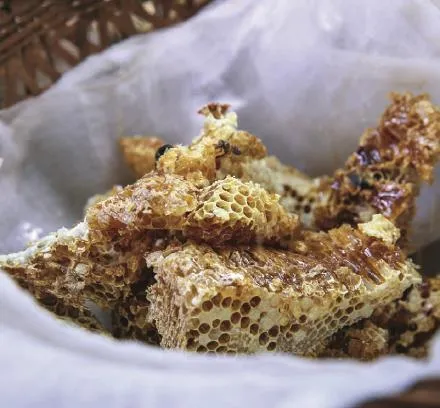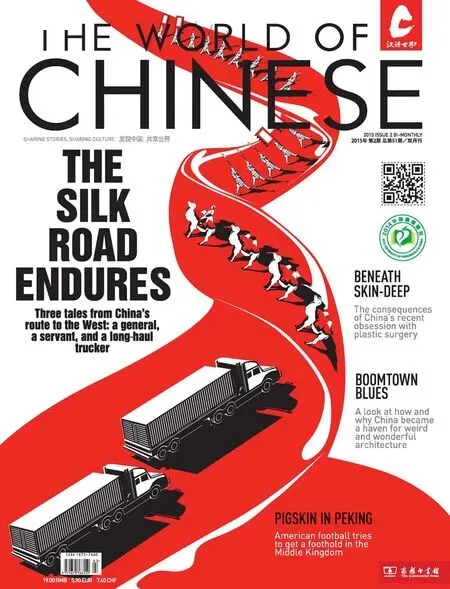The Bees of Banliao
KALElDOSCOPE
The Bees of Banliao
A look at traditional Chinese beekeeping
福建板寮村古法收集的野蜂蜜
PHOTOGRAPHS BY YANG TlANXlN (杨天鑫) , TEXT BY LlU JUE (刘珏)
Hidden in the mountain valley of Longyan, Fujian Province, a few dozen families reside along the banks of a shallow spring. Together, they form Banliao Village (板寮村). Perhaps heralding the slow passage of time here, slogans from the Cultural Revolution seem strangely fresh on the walls of many farmhouses. It seems as though the village has hardly changed since then.
With hills all around, the locals have created terraces in order to farm. Even today, their livelihoods still depend entirely on the mountain. Every once in a while, the local farmers load their bundles—packed with frewood, vegetables, fruits, mushrooms, poultry, and honey—and haul their shoulder poles to the nearby town for sale on the open market. Of these, honey is perhaps the most fascinating.
Collecting wild honey is a common practice in the mountain villages of the South, including Banliao Village. It’s a simple addition to the family’s income which doesn’t require too much labor. The villagers make bamboo or wood into cylindrical buckets, leaving small holes in the bottom. They put a few of these buckets under the roof outside the farmhouse, and the wild bees fnd their way into this manmade nest to settle year round. Wildfowers abound on the mountain, making it a bee heaven. The local farmers cut the honey once a year in early summer, only taking half of the comb, leaving enough for the bees to get through the winter. The honeycomb is then naturally fltered through cloth to produce the end result: sweet, delicious, natural honey.
This wild honey is highly valued by the locals—and on the market—because of its natural qualities. Unlike modern beekeeping where the honeycomb is cut year round (perhaps even before the comb is fully matured), obtaining this local honey can be laborious. However, the high price of the honey and the increase in demand in recent years means that the quality of the honey in the area is deteriorating. Many beekeepers are abandoning the slower, less productive
method of traditional beekeeping to make more money. Today, only in remote villages like Banliao can people get a glimpse of the traditional method, and visitors may not be able to see it for much longer.

THE BUCKETS ARE MADE OF LOCAL MATERlALS SUCH AS BAMBOO, LEAVES AND WOOD

USlNG THE SMOKE OF BURNlNG MUGWORT, THE BEEKEEPER GETS THE BEES OUT OF THElR NEST BEFORE TAKlNG THE HONEYCOMB

THE TOP OF THE BUCKET lS OPENED, AND COMB lS CAREFULLY BROKEN DOWN lNTO PlECES WlTHOUT DESTROYlNG lTS ORlGlNAL FORM. ENOUGH COMB WlLL BE LEFT OVER FOR THE BEES TO SURVlVE.

THE HONEY lS NATURALLY FlLTERED BY PUTTlNG THE COMB ON A PlECE OF WHlTE CLOTH AND LETTlNG GRAVlTY DO THE WORK

AFTER THE HONEY lS COLLECTED, THE BUCKET lS WRAPPED AND TAKEN BACK TO lTS ORlGlNAL LOCATlON
THE BEES HELD lN THE BASKET ARE LET FREE; THEY WlLL SOON FlND THElR WAY BACK TO THE NEST

